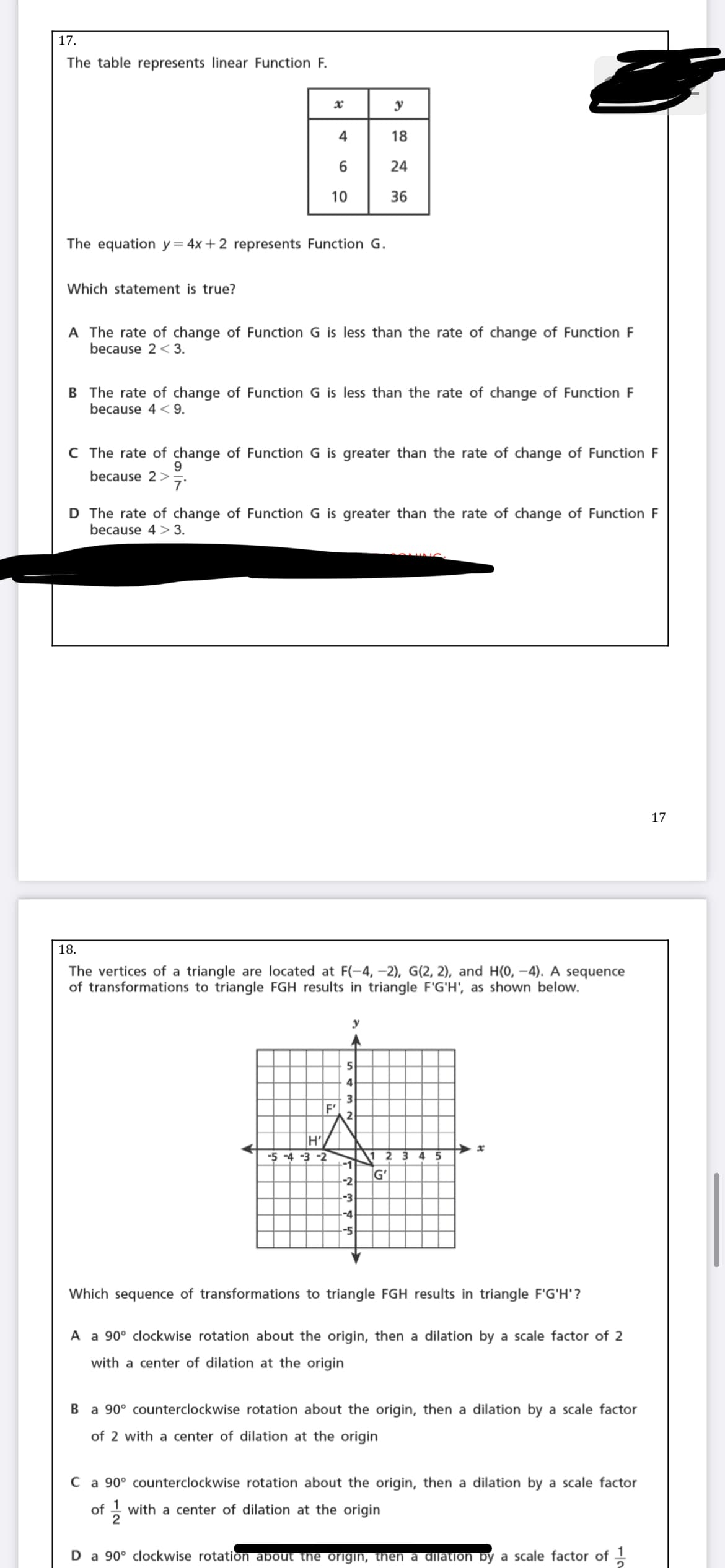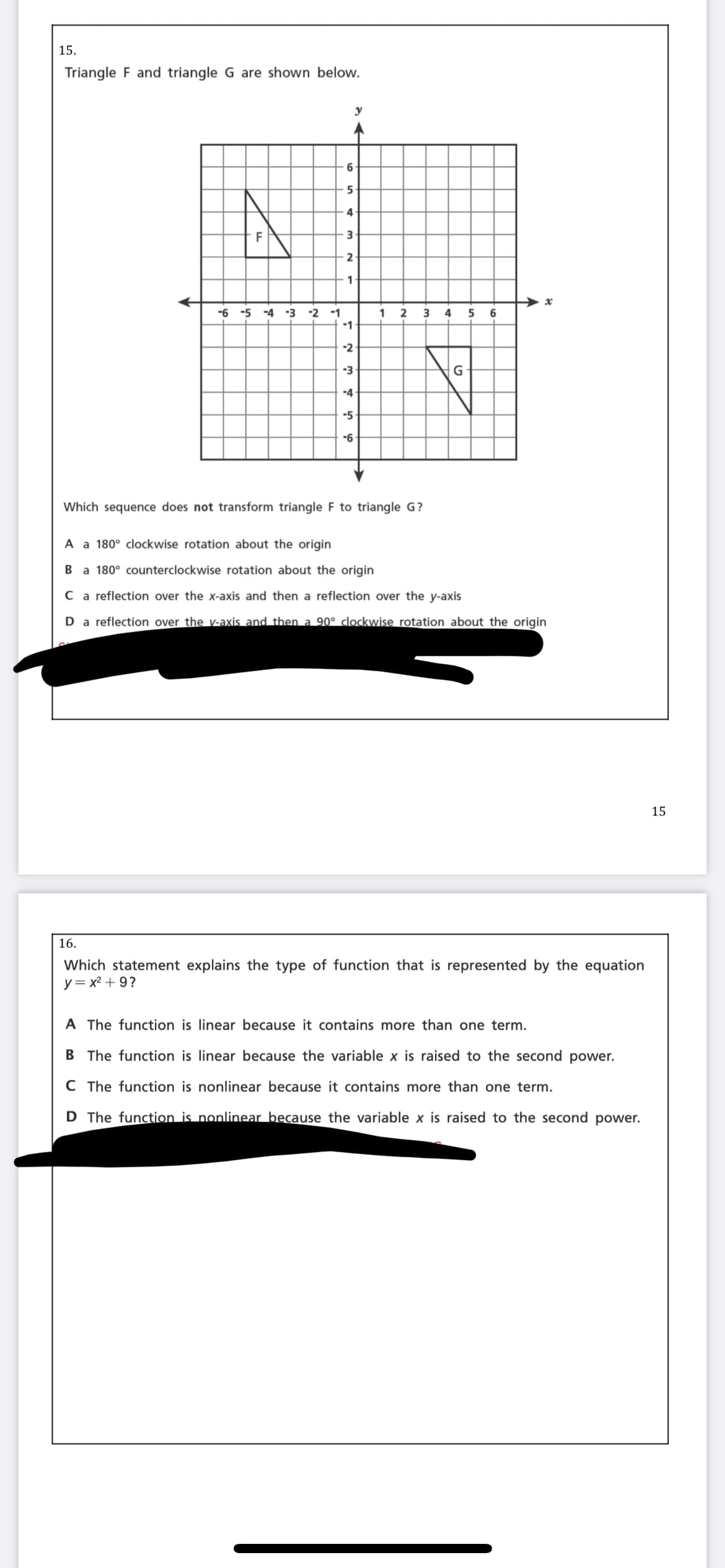The table represents linear Function F. y 4 18 6. 24 10 36 The equation y=4x+ 2 represents Function G. Which statement is true? A The rate of change of Function G is less than the rate of change of Function F because 2< 3. B The rate of change of Function G is less than the rate of change of Function F because 4 < 9. C The rate of change of Function G is greater than the rate of change of Function F because 2>7 9. D The rate of change of Function G is greater than the rate of change of Function F because 4 > 3.
The table represents linear Function F. y 4 18 6. 24 10 36 The equation y=4x+ 2 represents Function G. Which statement is true? A The rate of change of Function G is less than the rate of change of Function F because 2< 3. B The rate of change of Function G is less than the rate of change of Function F because 4 < 9. C The rate of change of Function G is greater than the rate of change of Function F because 2>7 9. D The rate of change of Function G is greater than the rate of change of Function F because 4 > 3.
Algebra & Trigonometry with Analytic Geometry
13th Edition
ISBN:9781133382119
Author:Swokowski
Publisher:Swokowski
Chapter10: Sequences, Series, And Probability
Section10.1: Infinite Sequences And Summation Notation
Problem 76E
Related questions
Question
Please help me it's due tonight

Transcribed Image Text:17.
The table represents linear Function F.
y
4
18
6.
24
36
The equation y=4x+2 represents Function G.
Which statement is true?
A The rate of change of Function G is less than the rate of change of Function F
because 2< 3.
B The rate of change of Function G is less than the rate of change of Function F
because 4 < 9.
C The rate of change of Function G is greater than the rate of change of Function F
9
because 2>
7'
D The rate of change of Function G is greater than the rate of change of Function F
because 4> 3.
17
18.
The vertices of a triangle are located at F(-4, –2), G(2, 2), and H(0, –4). A sequence
of transformations to triangle FGH results in triangle F'G'H', as shown below.
y
4
F'
1 2 3 4 5
-1
G'
-5 -4 -3 -2
-2
--3
-4
-5
Which sequence of transformations to triangle FGH results in triangle F'G'H'?
A a 90° clockwise rotation about the origin, then a dilation by a scale factor of 2
with a center of dilation at the origin
B a 90° counterclockwise rotation about the origin, then a dilation by a scale factor
of 2 with a center of dilation at the origin
C a 90° counterclockwise rotation about the origin, then a dilation by a scale factor
of
I with a center of dilation at the origin
Da 90° clockwise rotation about the origin, then a dlation by a scale factor of
10

Transcribed Image Text:15.
Triangle F and triangle G are shown below.
y
6
4
F
1
-6 -5 -4 -3 -2 -1
1
2 3 4
5
-1
-2
-3
-4
-5
-6
Which sequence does not transform triangle F to triangle G?
A a 180° clockwise rotation about the origin
Ba 180° counterclockwise rotation about the origin
C a reflection over the x-axis and then a reflection over the y-axis
Da reflection over the v-axis and then a 90° clockwise rotation about the origin
15
16.
Which statement explains the type of function that is represented by the equation
y= x2 + 9?
A The function is linear because it contains more than one term.
B The function is linear because the variable x is raised to the second power.
C The function is nonlinear because it contains more than one term.
D The function is nonlinear because the variable x is raised to the second power.
Expert Solution
This question has been solved!
Explore an expertly crafted, step-by-step solution for a thorough understanding of key concepts.
This is a popular solution!
Trending now
This is a popular solution!
Step by step
Solved in 3 steps

Knowledge Booster
Learn more about
Need a deep-dive on the concept behind this application? Look no further. Learn more about this topic, geometry and related others by exploring similar questions and additional content below.Recommended textbooks for you

Algebra & Trigonometry with Analytic Geometry
Algebra
ISBN:
9781133382119
Author:
Swokowski
Publisher:
Cengage

Algebra & Trigonometry with Analytic Geometry
Algebra
ISBN:
9781133382119
Author:
Swokowski
Publisher:
Cengage